A friend of mine, Ken Shifrin, recently emailed me with a historical question about valve trombone images. As a result, I put this little collection together. I have a few others I will be posting as I get more complete information, etc., but this is what I have for now. Readers can see the images in broader historical context by viewing them in the Trombone History Timeline.
1848—Paris, France: Georges Kastner’s treatise on military music, Manuel Général de Musique Militaire, includes prints of a number of different types of trombones used in military music, including rear-facing trombone, double-slide trombone, and several types of valve trombones (see below image; public domain). The note on the bottom of the page reads, “There are, as we know, three types of trombone, alto, tenor, and bass; but it is simply a difference in size and not in the shape of the instrument (Kastner, Militaire Pl. XVII).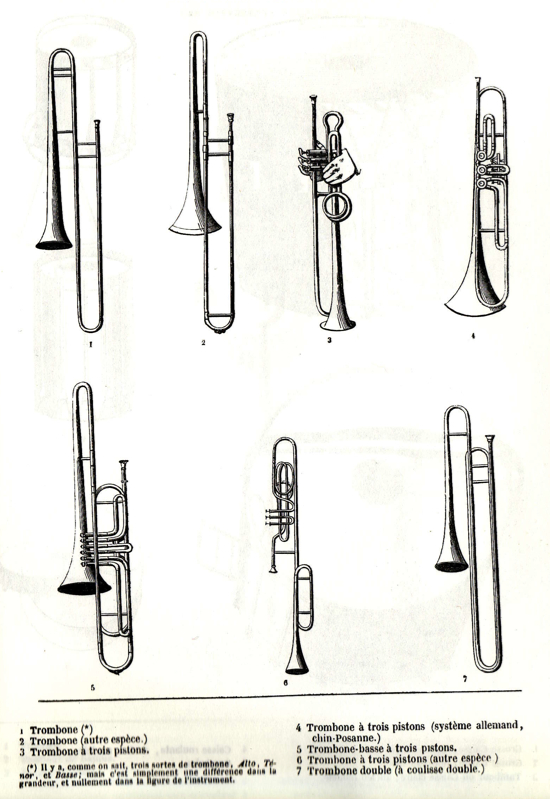
c. 1850—Paris, France: Adolphe Sax includes a trombone with a single piston valve, labeled “Trombone Sax, tenor et basse,” in his wind instrument catalog (see below image, bottom-middle; public domain) (Haine 187).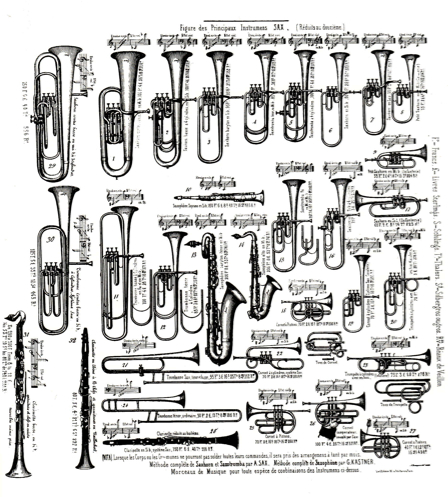
c. 1860—Michigan, United States: A portrait painting on a cabinet card shows a valve trombone player (see below image; public domain) (special thanks to Tassos Dimitriadis and Mogens Andresen).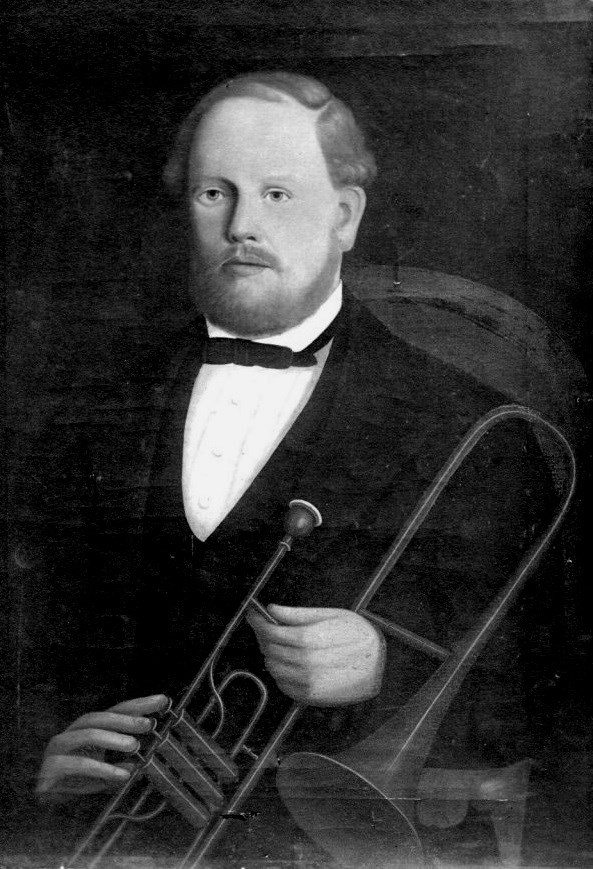
1864—Paris, France: Two prints in the illustrated newspaper L’Illustration depict instruments by Adolphe Sax. The first, Audition des nouveaux instruments d’Adolphe Sax, shows a man demonstrating instruments on a stage. The second shows several instruments up close, including a “Nouveau trombone,” a six-valve trombone (see below image; public domain) (L’Illustration vol. XLIV, July 16, 1864, p. 48).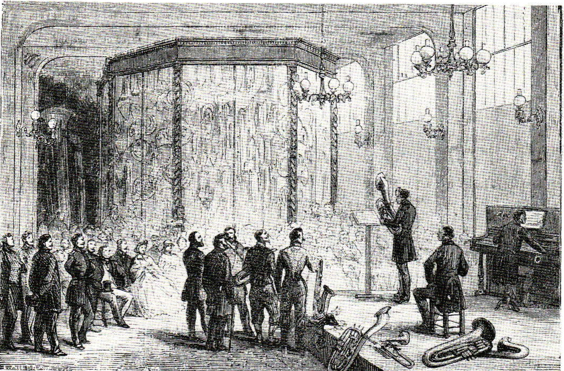
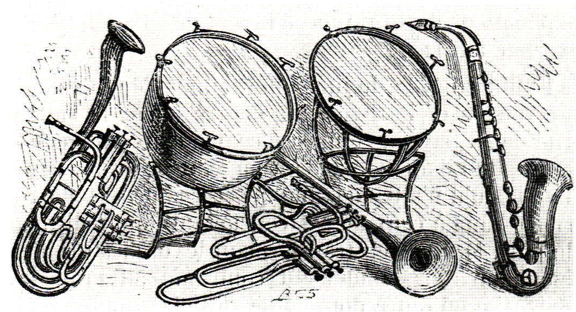
1870—London, England: Adam Wirth’s trombone method, Posaunen-Schule für Alt, Tenor und Bass-Posaune…Instruction Book of the Simple and Valve-Trombone, written in both German and English, is apparently intended for a wide audience. It includes a “Table of the different Trombones” that shows alto trombone in E-flat (like the vast majority of written sources), valve and slide tenors in B-flat, and bass in F (see below image; public domain) (Herbert, Trombone 192).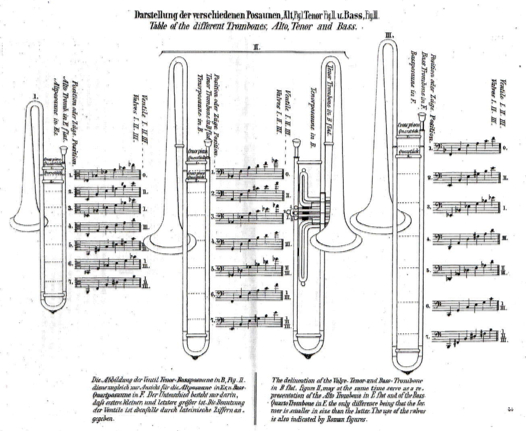
1878—Chicago, Illinois: Lyon & Healy, an instrument distributor and manufacturer, includes an alto valve trombone, specifically labeled an E-flat instrument, in its commercial catalog (see below image; public domain) (Lyon & Healy 1878, p. 23).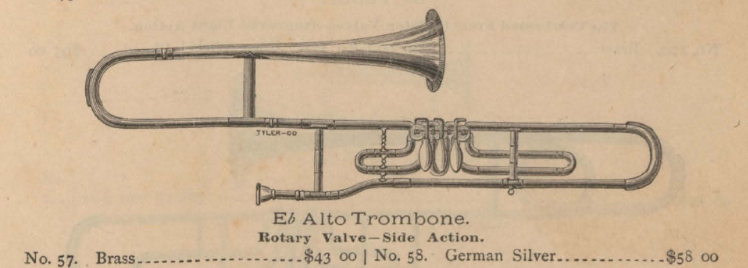
1880—New York: The catalog for Busch & Dodworth’s “Band Instrument” holdings indicates that the manufacturers offer a valve alto trombone pitched in E-flat. Notice that the below image says “Same Model in E-flat pitch, same as E-flat alto” (see below image; public domain) (Busch & Dodworth 13).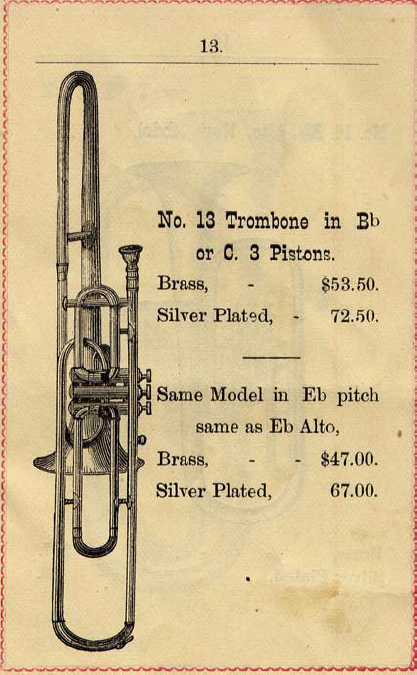
1880—Chicago, Illinois: Lyon & Healy, an instrument distributor and manufacturer, includes 2 alto valve trombone models in its catalog. Both are labeled as E-flat instruments (see below image; public domain) (Lyon & Healy 1880, 33).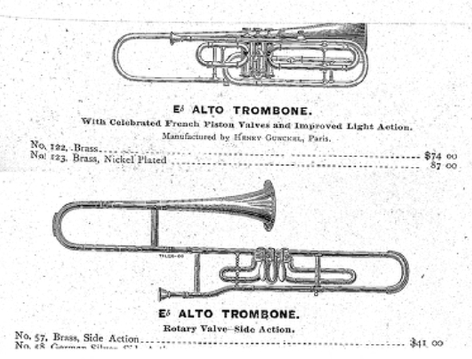
1885—Paris, France: A print by M. Eugene Chaperon entitled La répétition, published in L’Illustration, features a pair of trombonists rehearsing with a band (see below image; public domain) (l’Illustration vol. 86, September 12, 1885, pp. 172-173).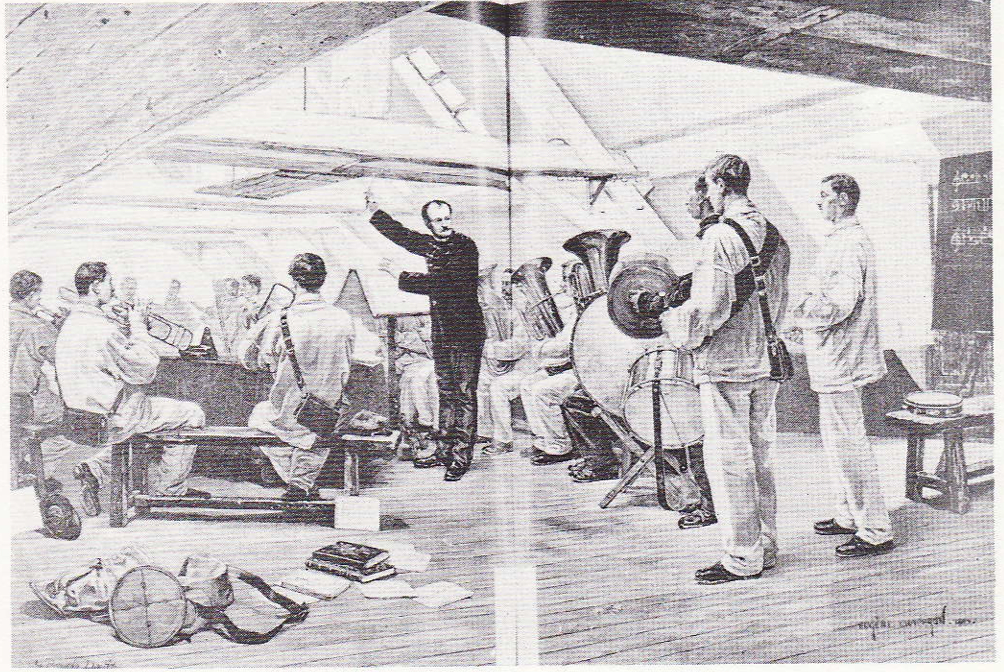
c. 1886—New York: A political cartoon published by Puck magazine targeting the labor movement includes a depiction of an orchestra with a trombone player (who represents the “anarchist press”). See below image; public domain.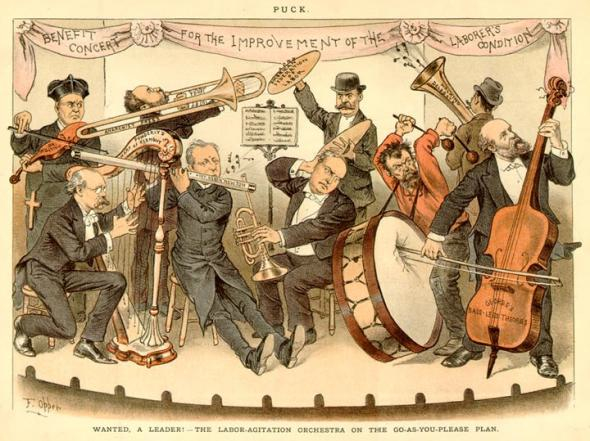
1886—New York: An “Illustrated Catalogue” for C. Bruno & Son offers three different E-flat alto valve trombones (“Style A,” “Style B,” and “Style C”), as well as a slide alto trombone in E-flat (see below 4 images; public domain) (Bruno 17, 31, 52-53).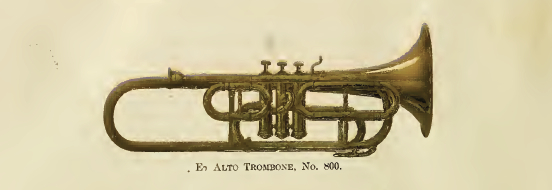
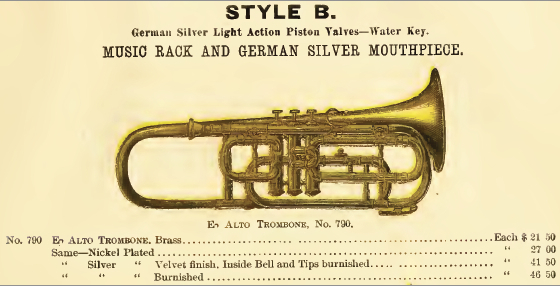
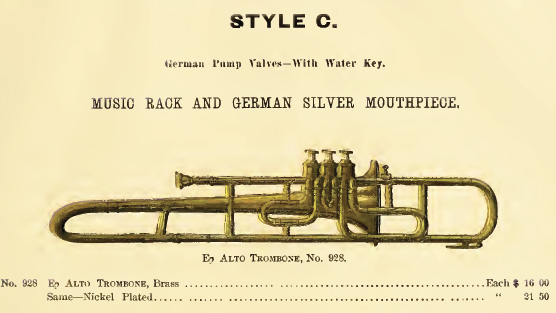
1888—A series of cigarette cards advertising W. Duke Sons & Co. cigarettes depicts women playing various musical instruments, one of the cards depicting a woman holding what appears to be a valve trombone (see below detail; public domain).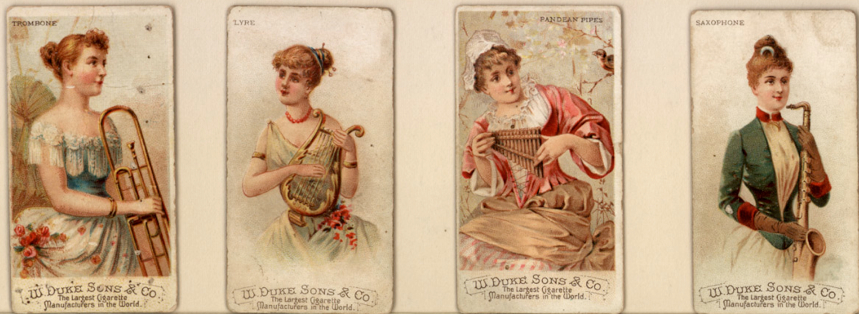
1888—Denmark: Erik Henningsen’s painting, Vagtparade, features several valve trombones in a military band (see below image; public domain) (Copenhagen, State Museum for Art).
1894—Chicago, Illinois: The catalog for Lyon & Healy, an instrument distributor and manufacturer, advertises numerous valve alto trombones, all specified as E-flat instruments (see below 5 images; public domain). Several bear a resemblance to valve alto trombones offered by other US distributors during the same time period, such as Montgomery Ward and Sears & Roebuck (see 1895, 1897) (Lyon & Healy 1894, 35, 39, 43, 50). In addition, the catalogue offers a slide alto trombone in E-flat, not pictured (Lyon & Healy 1894, 53).
1895—Chicago, Illinois: The popular and widely-distributed Montgomery Ward mail order catalogue includes offerings of 2 different types of valve alto trombones, the first under the subheading of “German Piston Valves” and the other under the subheading of “Improved French Piston Instruments.” Both alto trombones are listed as E-flat instruments (see above images; public domain) (Montgomery Ward 249).

1899—Leipzig, Germany: A catalog of brass instruments for the firm of Julius Heinrich Zimmermann shows a fairly diverse offering trombones, including alto, tenor, and bass trombones in both valve and slide models (see below image; public domain) (Moeck 106).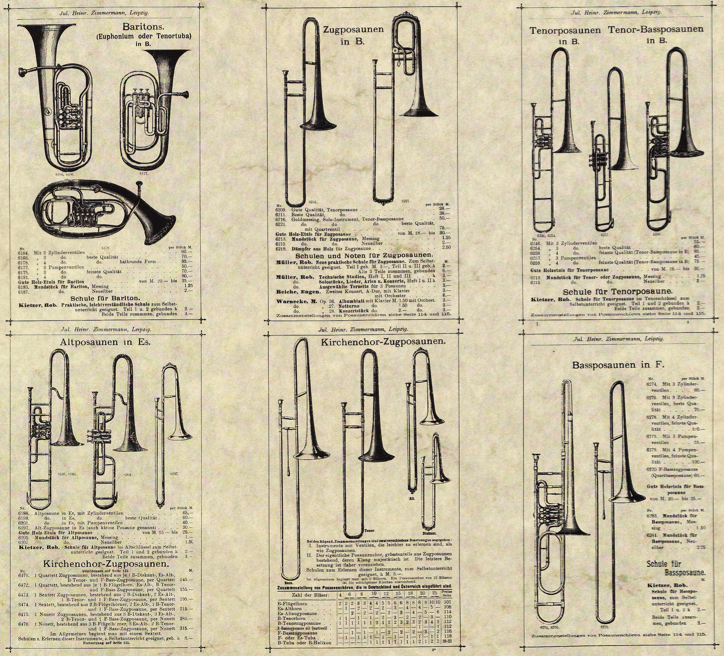
c. 1901—Spanish artist and writer Santiago Rusiñol i Prats (1861-1930) draws a series of musicians, including a valve trombonist (see below image; public domain; source: wikimedia commons).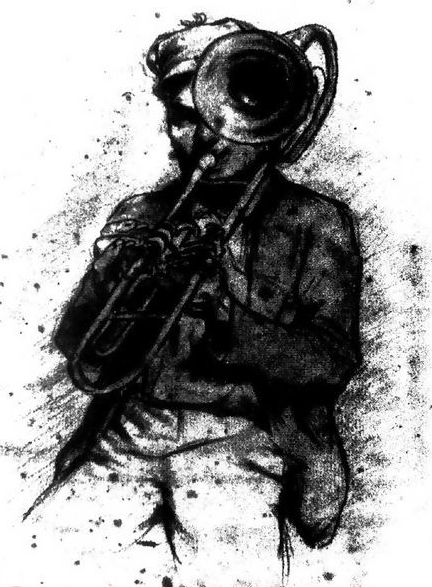
1902—The Klein Family, a famous unicycle circus troupe, includes a trombonist. A 1902 poster advertising “Troupe Klein” is one of several showing a member of the group playing trombone (see below detail; public domain).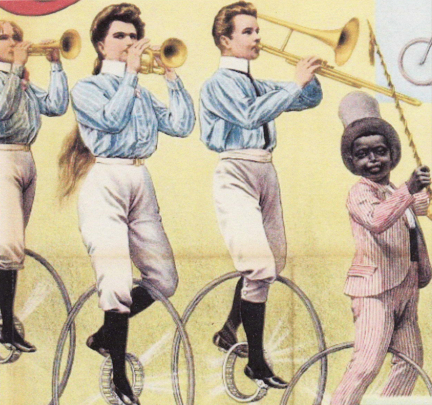
1904—Lockport, Louisiana: A photograph of the Matthews Band of Lockport, Louisiana shows both a valve trombonist and a slide trombonist in the 12-member group (see below image) (public domain image; source: wikimedia commons).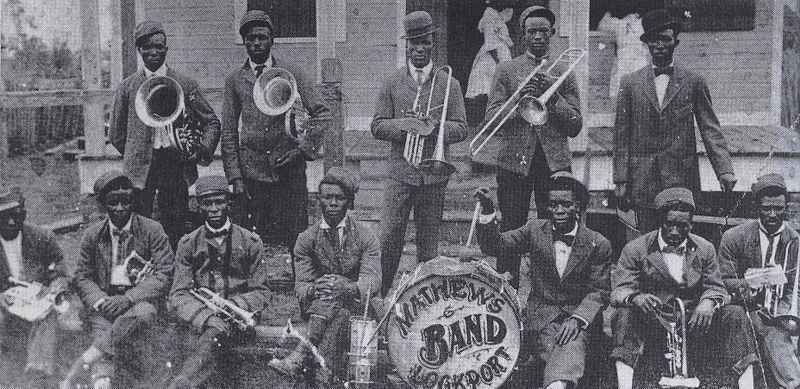
1906—London, England: The Graphic, an illustrated weekly newspaper, publishes a drawing by Lucas of 5 wind musicians playing from a balcony. Two of the five appear to be valve trombones (see below image; public domain).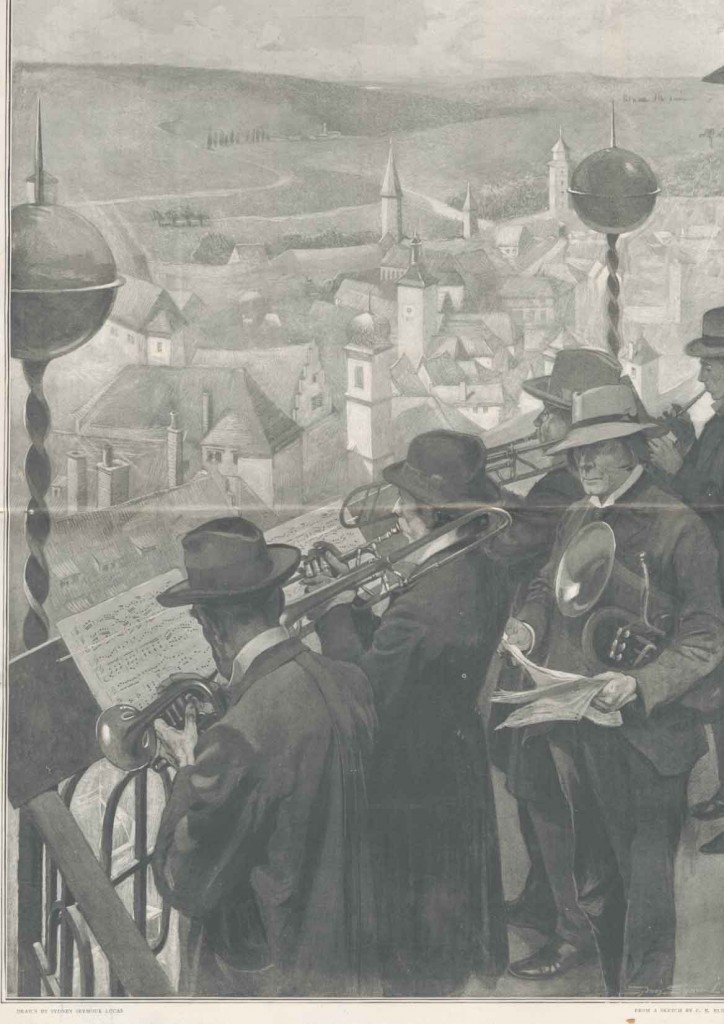
1910—Netherlands: A painting portraying a Dutch infantry band of 1864-90 includes a valve trombone (see below image; public domain) (New York Public Library Digital Gallery, Vinkhuijzen collection of military uniforms).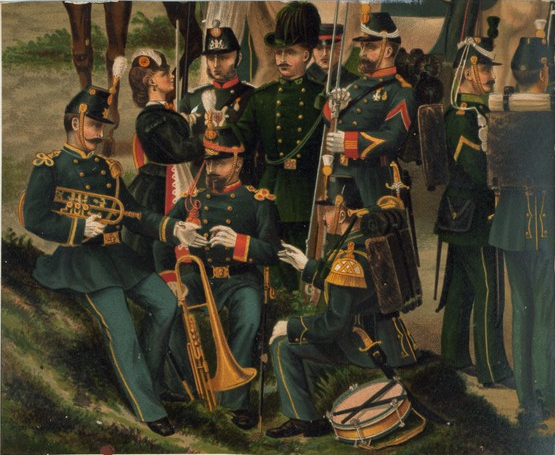
1912—Milan, Italy: Rotary valve trombone by Giovan Battista Cazzani is manufactured sometime before this date (see below image; used by permission of Brass Players Museum: www.neillins.com/brass.htm).
1912—France: The Couesnon catalog offers a valve alto trombone, specified as an E-flat instrument (see below image; public domain).
1916—Illinois: A circus poster from the Interscholastic Circus features a clown playing valve trombone (see below image; public domain).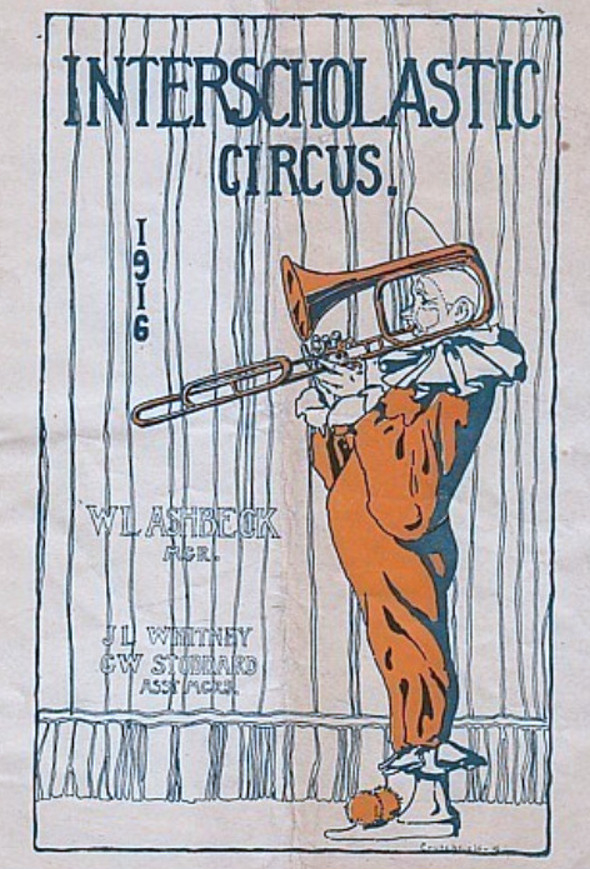
1920—Houston, Texas: A photograph of Houston’s “King & Carter Jazzing Orchestra” shows a valve trombone, trumpet, drums, violin, and bass (see below image; public domain; source: wikimedia commons).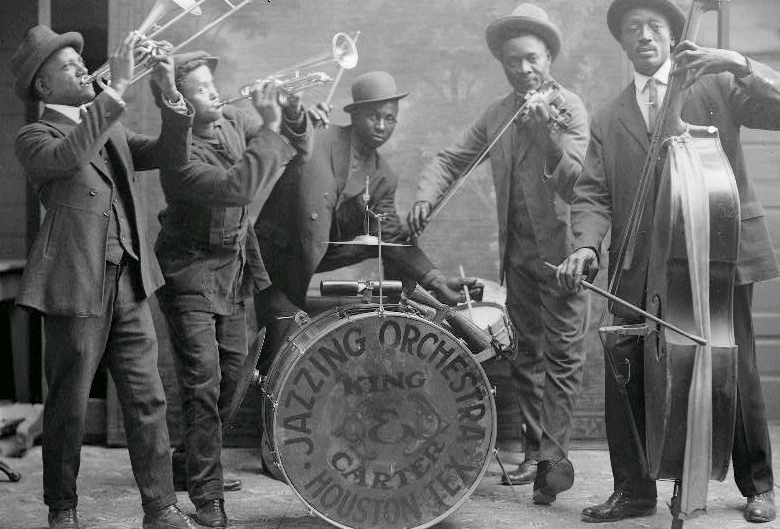
1923—A photo shows valve trombone player Juan Tizol with Duke Ellington’s orchestra (see below image; public domain; source: wikipedia commons). A Puerto Rican native, Tizol becomes a longstanding member of Ellington’s orchestra, performing with the group from 1929 to 1944. He also evolves into a well-respected composer, writing such Ellington standards as “Perdido” and “Caravan.”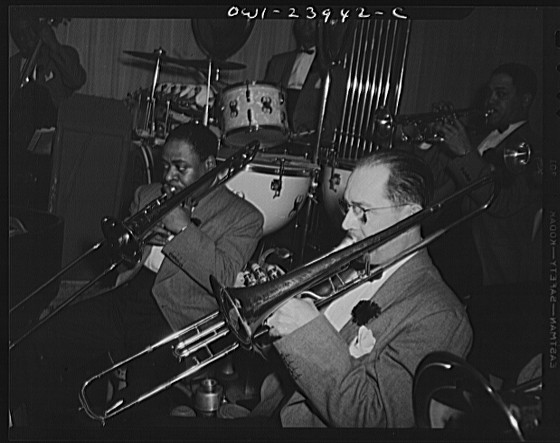
c. 1935—Paul Kaiser-Reka of Brandenburg, a variety show artist, musical clown, and musical instrument collector, poses with a valve buccin. Although the photograph dates from circa 1935, the instrument probably dates from the 19th century (see below image) (Rheinisches Bildarchiv Köln).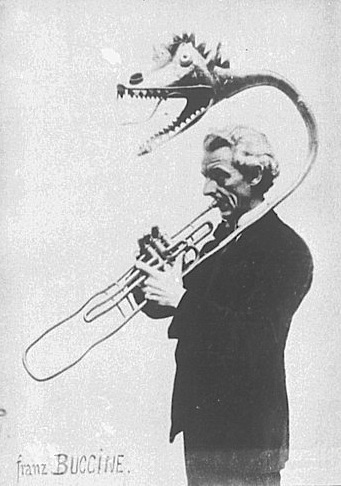
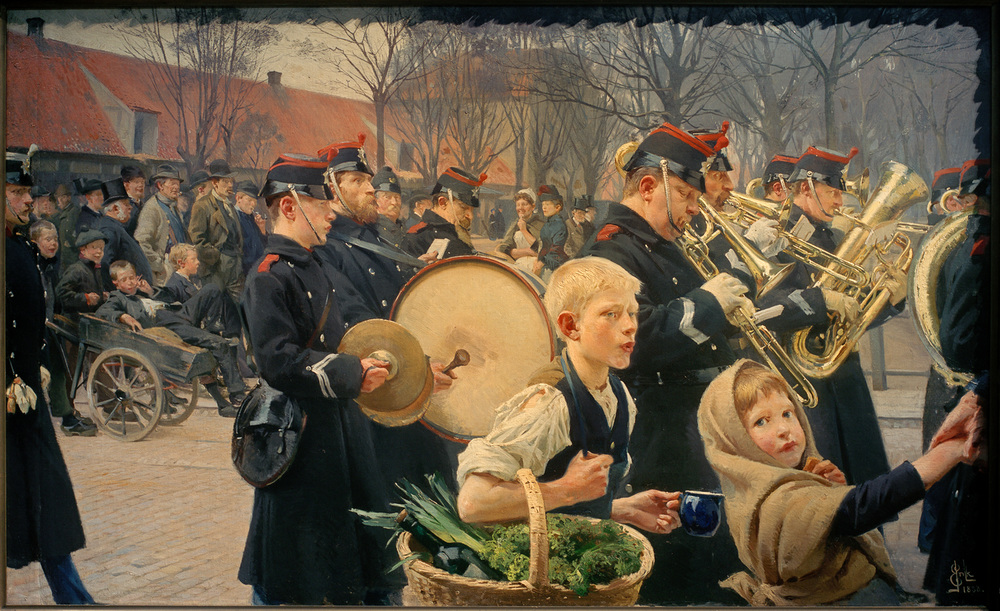
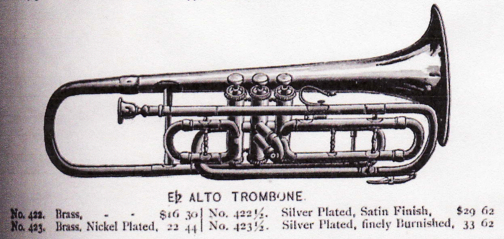
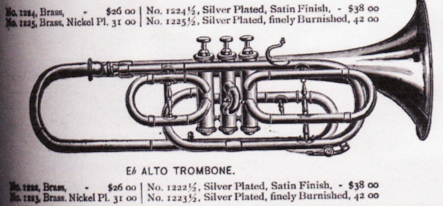
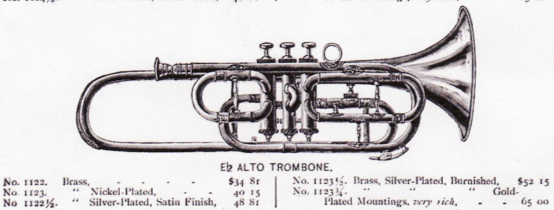
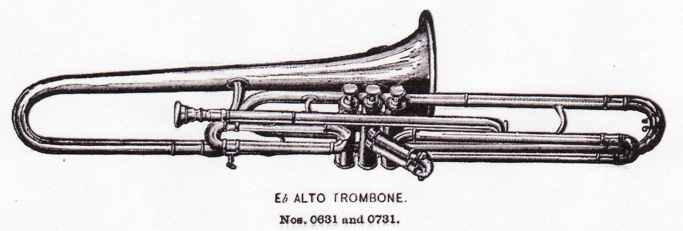
Peter Ada
Not seen a Lyon & Healy catalog from 1878. This is the second earliest L&H catalog I’ve heard about. Can I get a copy of the complete catalog?
wkimball
It would probably be easiest to view it here: http://libmma.contentdm.oclc.org/cdm/ref/collection/p16028coll4/id/132
Parker
What is your real name? I am doing a speech about brass instruments and I need an author for this to be a good source. Thank You
wkimball
Dr. Will Kimball, Professor of Trombone at Brigham Young University